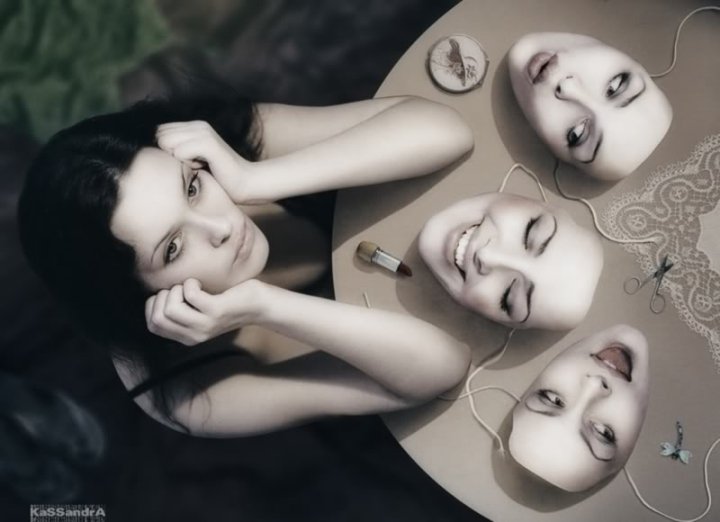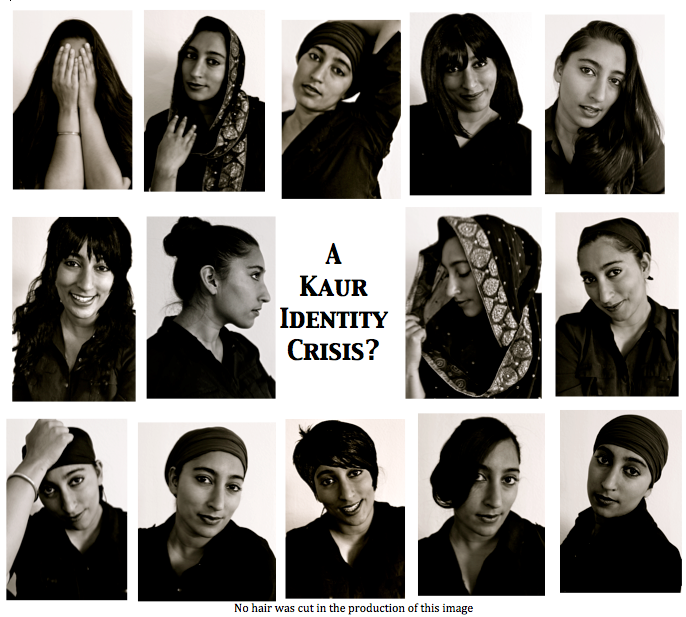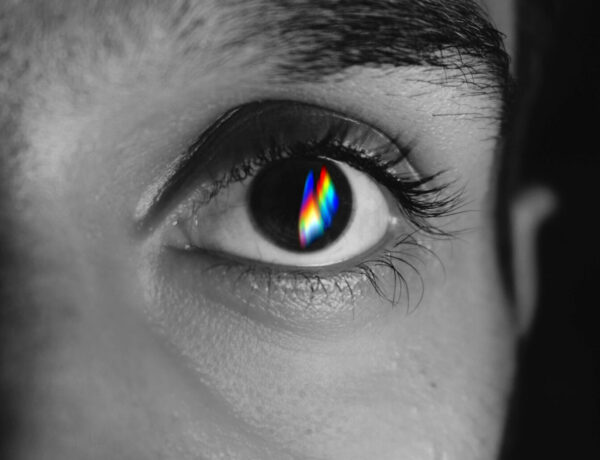What does a Kaur look like?
Intro
The physical identity of Singhs is quite simple. Either he keeps his dhari and wears a dastar, or he doesn’t. There are a few combinations of those options, such as wearing dastar but not having a dhari and vice versa, but in general, the visual portrayal of the Sikh male is standard and universal.
The Kaur physical identity, however, is not so obvious or well defined. Some Kaurs keep kesh, others do not. Some cover their heads with dastars, patkas, or chunis, while others choose not to cover their heads. Some Kaurs believe it is okay to try different hairstyles, while others stick to one.
At this point in time, Sikhi does not have a collective, communal idea of what a Kaur looks like or what her physical identity should portray. This begs the question: Are Kaurs, as a collective, suffering from a physical identity crisis?
What is a physical identity?
What exactly is an identity or a physical identity?
An identity refers to a social category (group of people) that has membership rules, unique attributes, or expected behaviors. A social category also has a set of characteristics (beliefs, morals, or physical attributes). People who are part of a social category take pride in their group; it is a source of dignity, pride, or honor (Source 1).
Using the above definition, “Sikh” is a social category and a Sikh identity would be defined as:
- Membership rules: Rehat Maryada
- Unique physical attributes: The 5 Ks and the dastar
- Beliefs: Guru Granth & Guru Panth
- Behavior: Living a gurmat inspired life (ie: exemplifing “naam japna,” “vand chakna,” and “kirt karni”)
In the Sikh case, the physical features of a person connect him/her to Sikh values and characteristics. “Sikhs wear an external uniform to unify and bind them to the beliefs of the religion and to remind them of their commitment to the Sikh Gurus at all times,” (Source 2).
Identity Politics
The argument or disagreement over who is part of a social category (group) or who is not, is called “identity politics” (Source 1). It asks the question, “Does this person/behavior/characteristic fit into the social category?” It seems like the Singh physical identity is very obvious. “The dastar and dhari make this man a Sikh, visually.”
Yet the Kaur identity, her characteristics and physical attributes, is still a matter of identity politics. “What makes this woman a Sikh, visually? Her long hair? Does she need it to be covered before we call her a Kaur? Does she need to wear a dastar?”
There is contestation over a Kaur’s “look.” The Kaur identity is not unified, “Sikh women, some with their turbans, some with their long hair in buns and braids, are perhaps less identifiable ….,” (Source 6). The Kaur’s physical identity, whether it be hidden in private minds or in openly discussed in public forums, is a matter of identity politics.
“After the Oak Creek tragedy, I watched stranger after stranger come up to the males in my family and offer their support and condolences. No one said anything to me, and eventually I realized it’s because there’s nothing about my appearance that’s noticeably Sikh,” (Source 3). If all Sikh women wore dastars, would the Kaur physical identity be more recognizable? Or would chunis suffice? Maybe we should just let our hair down? Perhaps, it is not the vehicle or mode of expression, but rather, that we all look the same and have a unified front? For instance, “She is a Kaur because all Kaurs wear/have xyz.”
What does a Kaur look like?
When it comes to personal physical identity, a person has physical characteristics that she is aware of, and which distinguishes her from other people. A social category, like “Sikh” or “Singhs,” is in part defined by what a it is not. How is a Singh visually different from non-Singhs? His beard + turban + 5Ks.
But, since the Kaur’s physical identity is in constant flux and not universally consistent, it is difficult to say Kaurs are visually different from non-Kaurs. The social category of “Kaur,” is not as solidified as “Singh,” because it is impossible to define what Kaur physically looks like. What is she not? How is a Kaur visually different from non-Kaurs? Her 5Ks? But those are very subtle and not as visually impactful as her male counterparts. Her 5Ks and her long hair? Her chuni? Her dastar? Her braid? A group identity cannot be constructed with varying uniforms. A social category does not exist with multiple definitions of a single identity. Thus, it is difficult to say that Kaurs, as a group, have a cohesive physical identity. Is “Kaur” a social category in the way “Singh” is?
To illustrate this dilemma consider visual media. Sikh organizations struggle to represent the Kaur in their print media. They quickly slap an image of a sardar on their brochures, “But what about the female?” the marketing director asks. “Does a Kaur in a dastar suffice?” asks the designer. “But what about those with chunis? Or jooras?”
This question of Kaur representation goes beyond the marketing department. Kaurs struggle with understanding their place in the larger world, non-Sikh groups, and the Sikh panth. Without a cohesive identity, some feel suspended between worlds, not completely part of any single community. In this struggle, may Kaurs “try on” different physical identities and journey through different identity statues.
Identity Statuses
According to developmental psychologist E.H. Erikson, there are several identity statuses that individuals may go through. I have tried to apply them to the physical identity of Kaurs (Source 4).
1. Identity achievement occurs when an individual has gone through an exploration of different identities and made a commitment to one (Source 4).
Example: “As a Kaur, I have tried different physical ways to show my Sikh identity. I’ve kept my hair down, I’ve worn a dastar to school, and I’ve tried wearing a chunni in public. But I’ve finally decided that what feels best to me is to keep it in a bun. After trying all the options, I connect to the bun the best. That is what I am committed to.”
2. Moratorium is the status of a person who is actively involved in exploring different identities, but has not made a commitment (Source 4).
Example: “As a Kaur, I like wearing a dastar at camps, but at school I like leaving my hair open. Maybe one day I’ll wear a patka in public, I’m not sure yet. I’m still in the deciding phase. One day I’ll make a commitment. ”
3. Foreclosure status is when a person has made a commitment without attempting identity investigation (Source 4).
Example: “I am a Kaur therefore I will wear a chuni, end of story. I did not and will never need to explore other options.”
4. Identity diffusion occurs when there is neither an identity crisis nor a commitment (Source 4).
Example: “I am a Kaur, but I do whatever I feel like at the time. Sometimes I wear my hair long, sometimes it’s in crazy braids, other times I wear a dastar. They all feel good. I am fine with noncommittal, I don’t need to decide ever.”
Most Singhs are handed one identity status, the foreclosure status, and commit to it for their entire lives. The second he is born, his parents expect him to wear a dastar (in general). In essence, the Singh is born into foreclosure status, “Because I am a Singh, I wear a dastar. I have never and will never explore other options.” Kaurs however, are more likely to struggle between the four statuses.
Identity and Fitting into Community
When a Kaur “finds herself,” or “creates herself,” she finds community and fits into it. Through this process, she emerges as a unique person with a specific physical identity, temperament, personality, and ideals, which mold (and in turn are molded by) her roles, occupations, relationships, and values (Source 5). She becomes unique, but she also becomes part of a larger community (in the Sikh context, this would be the panth) that has created a collective consciousness (Sikh theology and practice); a consciousness that is perpetuated by physical identity (bana).
But if Sikh women go through the identity formation process, jumping from one identity status to the other, and emerge as Kaurs with “different faces,” as a vast range of different physical identities, without any cohesiveness or uniformity, does she truly become a part of a community? Does this lack of Kaur unity mean the panth has botched the construction of a gender-neutral collective consciousness? Has the panth failed in giving the Kaur a role in representing Sikhi to the world through her physical image? Has the panth been unsuccessful in creating belonging and community for the Kaur? Is she unable to bond with fellow Sikhs because she doesn’t look like a “Sikh”?
Ultimately, I think the lack of a cohesive understanding of the Kaur’s physical identity results in ambiguity, apathy, and confusion.
Why does it matter?
The struggle for people to visually portray the female Sikh begs the question, why do Kaurs need to be recognized as Kaurs? Does she need to feel like she is a part of the panth through her bana, or can she live life happily and be fulfilled without physical sameness?
I personally feel that, yes, Kaurs should have a visually distinct identity, and a consistent physical uniform because a uniform:
- Psychologically connects a Kaur to the panth
- Creates harmony and alikeness which can help Sikh women bond
- Keeps a Kaur committed to her Sikh values
- Allows Sikhs to recognize her as a Kaur and thus it helps builds community
- Allows non-Sikhs to recognize her as a Kaur and they can ask her questions about Sikhi
- Illustrates a Kaur’s commitment to Sikhi and others can (ideally) look to her as a beacon of truthful living
- Creates a sense of belonging and camaraderie with her panth and her Gurus
- Encourage a sense of pride in Sikh life and values
- Eliminates the range of visual portrayals of the Kaur, which inhibits them from creating a cohesive social identity
- Prevents confusion to those trying to understand Sikhi
- Reduces the internal prejudice, conflict, and judgment that comes with a diverse Kaur image
- Brings about physical equality: Singhs have a cohesive physical identity, so Kaurs should too
- Facilitates leadership: The lack of a female physical identity excuses our females from taking leadership roles
However, the opposing view point is interesting and has merit too. Here are some reasons some may feel a consistent uniform is unnecessary. “No, Kaurs can look whichever way they wish, they do not need a visually distinct identity, and consistent physical uniform because….”
- Sikhi encourages individuals to think for themselves and thus, Kaurs need the freedom of will to decide what is best for her
- There is not only one Sikh female identity
- The range of visual identities celebrates the uniqueness of each individual
- Sikhi is a spiritual journey and physical appearance doesn’t matter
- Diversity facilitates dialogue and social richness
- The diversity of Kaurs’ physical identities is a reflection of Sikhi’s flexibility and timelessness
- All faces flow from different interpretations of Sikhi and all are beautiful manifestations of hukam
- The visual differences one sees among Kaurs results in deeper, meaningful conversations and thoughts on bana, saroop, and identity
- Kaurs’ diverse interpretations of identity result in richer dialogue, and a more colorful social fabric
- Kaur diversity is a celebration of different paths to the same end
- Allow a Kaur to be who she is, let her reflect her personality through her physical image and don’t restrict her or impose an identity on her
Or…Are we putting the cart before the horse? “Infuse the Kaur with gurbani and Guru will show her the way,”…and ultimately, this conversation is meaningless…?
Conclusion: Why is it important to have an identity?
Physical identity impacts how other perceive and treat you, molds how you feel about yourself, and communicates your values to the world. Furthermore, physical identity has a role in developing personal psyche. “Researchers have found that those who have made a strong commitment to an identity tend to be happier and healthier than those who have not. Those with a status of identity diffusion tend to feel out of place in the world and don’t pursue a sense of identity,” (Source 4).
I guess this means choose an identity, commit to it, and become happier and more connected with the panth.
But what is that physical identity for Kaurs and should it be universal for all Kaurs, as it is for Singhs?
Sources:
(1) http://www.stanford.edu/~jfearon/papers/iden1v2.pdf
(2) http://www.sikhcoalition.org/resources/about-sikhs/at-a-glance
(4) http://psychology.about.com/od/theoriesofpersonality/a/identitycrisis.htm
(5) http://en.wikipedia.org/wiki/Erik_Erikson
(6) http://www.huffingtonpost.com/gunisha-kaur/women-and-sikh-identity_b_1765028.html
Comments
Manjit Kaur Charaia September 10, 2013 at 4:40 pm
Wish identity was made universal for kaurs as it was made for singhs. Had I worn dastaar since my childhood/teen years, it wouldn’t have been difficult to cover my head all the times. Being Amritdhari, it made me feel bad at times especially when I met with muslims girls who had nice scarf on their heads all the times. So i tried it all. Now I have reached ‘Identity achievement’ stage in my fifties & can’t be a role model to my daughters in this regard.
Mac September 10, 2013 at 7:05 pm
HI, This is Manjeets husband, an “american” I loved this article but I still object to efforts to strengthen differences, because in Gods eyes we are all the same, a bunch of monkeys arguing over hats. I love Sikh beliefs a lot, as I learn more about it it continues to amaze me. So why not share these stories with more people ? I do when ever I can. Much Love, Mac.
Manipal Singh September 11, 2013 at 12:35 am
It is easy to get lost in the rat race and even easier to lose our way asking for directions from people as everyone has a different perspective towards the issue.There is only the word of guru i.e. Guru Granth Sahib Ji that will remain consistent throughout. Guru Granth Sahib Ji has guided us to be saabat soorat and wear turban ( saabat soorat dastar sira) . Is that shabad only for Sikh males or both? Guru Gobind Singh ji baptized in 1699 and gifted turban to both males and females and in his 52 hukams he instructed to wear turban at all the times. http://www.info-sikh.com/Page52Hukams.htmlThere is one link for reference which you may enjoy
Sukhbir September 11, 2013 at 1:38 am
Hi, I read the article and my first thought was, why we as Sikhs seem to think of outward appearance first before internal wellbeing, especially nowadays. If we spend time reading (good articles and parth etc.) and making ourselves stable inside then what is outward is generated from within. Our outward appearance becomes out signature unique to us. We have to be careful here of one of the five vices which is Moh, emotional attachment and sometimes focusing on the issue of physical appearance is in my view a form of Moh. Being a Sikh now with dastar and beard I still find it difficult to live up to the high ideals we have but never give up trying. I remember even at gurudwara’s the first thing is to say to men and women “Sikh Sajo”, i.e. keep the physical uniform when really we should say to people read bani/SGGS ji first before asking them to keep physical uniform. In my view I think a Kaur does not have an identity crisis simply from the Sikh women in history who are examples and then from the modern day Sikh women I see around today. Most women are easily identifiable as Sikhs from the Kara and just their general appearance, they have an aura. Some are very confident and some are shy but ultimately you can still tell they are Kaurs. I think women are lucky they have no specific directive on appearance as means they may not see the restrictions a Singh can on a day to day basis in the western world. I think if taken as a positive Kaurs are better placed to represent and encourage Sikhism, they have a blank page to work with for appearance. I over the last 3-4 years deciding to keep my beard had many questions about my appearance from people at work from punjabi’s and non punjabi’s. It is difficult to answer each time clearly and give a fantastic answer, it takes practice. I did feel the pressure at times. Then recently I came across a T-Shirt, which explains beautifully what a turban represents: http://www.turbaninc.com/alldesigns/hottest-turban-shirt.htmlI wore it and the response was incredible, both parties were impressed. I hope my words are taken lightly as they are not meant to offend or frustrate anyone. Best of luck in your path as a Gursikh.Sukh Singh
Some Singh September 11, 2013 at 4:54 pm
Your articles are always cool as always. This is a Kaur’s issue overall but heres my two cents for a kaurs physical identity: The way I can tell who’s a Kaur and thus who im attracted to: she has a big bun or a dastaar or long flowing hair, eyebrows that have not been molested by plucking or strings (I can understand removing a unibrow if its extremely thick for the sake of having two distinct eyebrows but I love me some natural eyebrows), she’s got some natural peach fuzz on her face because she doesn’t wax that stuff (I loooove me sooome peach fuuuuzz but I understand if she decides to remove some if its the size of a males beard/dhari), shes got hairy arms because she don’t shave no where, she doesn’t flash cleavage, she’s got a suave style, shes got an insane amount of grace in her walk, she pulls off a fashionable royalty type look in her dress without teetering on the sexual seductive side because that’s not her character….all in all a true princess worthy of being called a princess.
Japneet Kaur September 11, 2013 at 10:01 pm
Hi, A very well written article illustrating the practical problem being faced by Kaurs all aver the world. I really appreciate the different schools of thought but on a personal note I feel Sikhi was started to unify people and bring out humanity. When talking of unity and equality it means for all divisions in society; based on caste, color, religion or gender. When Guru Sahib preached Sikhi he preached equality and a sikh is not defined as a male/female sikh or a singh/kaur. So I feel we have to have a unified image for all the sikhs, which comes with 5Ks+dastaar.
Jasleen September 13, 2013 at 10:29 pm Edit Our Gurus never meant for there to be an identity crisis. I am a 17 year old girl who wears a dastar. Yes, it is difficult at school as we stand out. However it is even more difficult because most sikh women do not wear dastars. Guru Gobind Singh jee have the dastar to the khalsa panth as a whole. We believe in gender equality. Wearing the dastar by no means makes me a better Sikh, and I do not mean to offend anyone. But the proper Kaur identity is the same identity for the entire khalsa panth: the dastar.
izhaarbir September 16, 2013 at 1:14 pm
According to Guru Panth, Sikh women do have an uniform identity: keeping of one’s hair unshorn. Historically and religiously a Sikh is only recognized as a Sikh once the Sikh has submitted themselves to the Guru. Process of submitting oneself to the Guru, according to Bhai Gurdas, was charan amrit of Gurus. Guru Gobind Singh Ji changed this adoption of Sikhi process in 1699 to give the social/temporal ownership of Guruship to the initiates of the new process, henceforth known as the Khalsa. Meanwhile spiritual authority was given to Guru Granth Sahib, such that the Khalsa must forever abide by the rules of Guru Granth Sahib Ji, as well as the rules for the Khalsa given by Guru Gobind Singh Ji on Vaisakhi 1699. With the creation of the Sikh Rehat Maryada, then, the identity of Kaurs has been answered for now, by Guru Panth. Guru Panth has given Kaurs the choice to adopt the dastar or not, while their social identification is found in their unshorn hair. It seems to me that no matter what Guru Panth decides, whether as it has been decided in the past, or as it will decide in the future, in the realm of academics, feminists, and historians, Guru Panth will forever be in a lose-lose situation. If Guru Panth decides to give women a uniform identity, whatever it maybe, the idiots will scream that “women are oppressed because their choices have been taken from them”. If Guru Panth decides, as it did decide, to give women some limited freedom to choose (dastar or not), then the idiots scream “but there is too much choice, why can’t we simply have the same uniform as the Singhs? This is oppression!”
shadesofbrwn October 2, 2013 at 3:23 pm Love this post. You put something I’d been feeling into words so well : )







No Comments